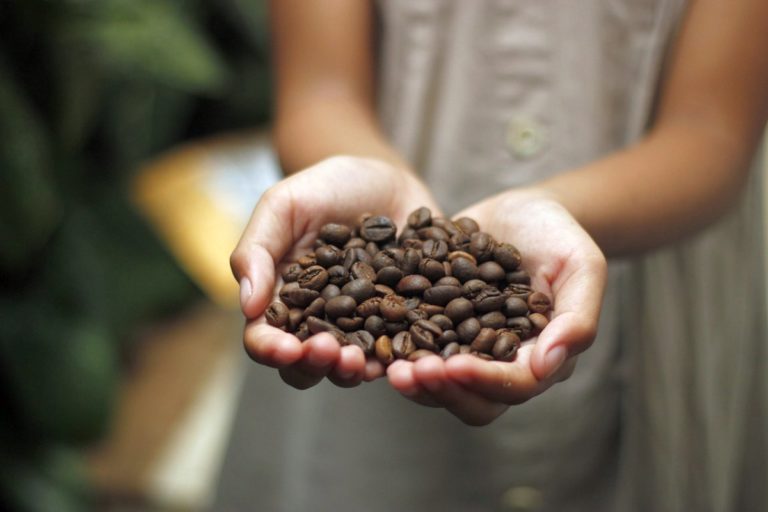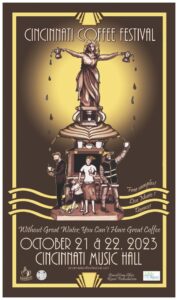Coffee is the world’s most loved beverage… after beer, of course. Every single morning, billions of cups of coffee are consumed throughout the world.
The reason? To wake us up. The reality behind coffee consumption is that it is consumed mainly because of its ability to wake people up, alert them; stimulate them.
Affiliate disclosure
This page may contain affiliate links – we may earn a small commission when you make a purchase through these links. This is at no extra cost to you.
This happens because of caffeine. Caffeine is one of the safest drugs around.
It is a stimulant and it is actually present in a lot of foods and plants throughout the world that you probably didn’t think about before.
Caffeine is probably the world’s most widely consumed drug right after aspirin or ibuprofen. It has a very special place in our hearts. Which is why this article is gonna cover all the natural sources of caffeine.
Caffeine is named after coffee because it is coffee that turned our attention to it. Yet, caffeine has been present in many foods and drinks consumed historically way before coffee was even discovered.
Natural sources of caffeine
Cocoa
When the Spanish discovered the American continent, they were very surprised to see that the Aztecs, from ancient Mexico, despite all their differences, shared a habit with them.
Cocoa, in its most natural form, looks a lot like coffee.
We’ve grown used to sweetened cocoa, but back then there was no sugar and the look, feel, and taste of hot cocoa was a lot like that of coffee.
After all, both are treated similarly: it’s a seed from a fruit that is roasted and then ground.
Cocoa was sort of an acquired taste for the Aztec people, and mainly adults seemed to consume it. One of the main reasons was its caffeine content.
A cup of cocoa contains about one third of the caffeine that a cup of coffee does.
This may not seem like much now, but surely back then that small amount of caffeine was enough to wake you up!
By the way, have you had a look at our deals page yet?
Tea
The oldest known beverage containing caffeine is undoubtedly tea.
The earliest actual known evidence of tea drinking dates back to 56 BC—that’s over 2000 years old, which is pretty crazy.
Tea is any drink made from the leaves of the Tea Tree, camellia sinensis. These are harvested, fermented, dried, and then used as tea.
Depending on the level of fermentation you get a different tea.
White and green tea, for example, requires no fermentation at all. Red and black tea require moderate and high fermentation, respectively.
The more fermentation, the higher the caffeine content; white tea contains just about the same caffeine content as cocoa, while green tea is a little higher.
Red and black tea comes much closer to coffee in terms of caffeine content per cup.
Matcha, which is a type of green tea, is much more concentrated and could be equated to espresso but in tea form. It has a very high caffeine content.
Kola nuts
Like cocoa and coffee, kola nuts are found inside the kola fruit, which grows on trees native to Africa and West Africa in particular.
These nuts have a spice-like, bittersweet taste that is very sought-after and it is actually a staple in some African countries.
As you may have guessed, this nut is extracted to then flavor many soft drinks, most famously Coca-Cola. That’s probably where it got its name!
Kola nuts are packed with caffeine and most foods and drinks using kola nuts have a decent amount of caffeine in them.
Most soft drinks like Coca-Cola, however, contain mostly artificial (synthetic) caffeine.
Yerba mate
Native to South America, this plant has been historically consumed by the Native people of Brazil, Paraguay, and Argentina.
Its consumption is very ritualistic, being done on special receptacles made out of wood and leather.
Yerba mate is harvested and chopped, stem and all, and contains a decent amount of caffeine.
People from this region of South America start their day with yerba mate in the same way that anyone else would start their day with a cup of coffee.
Yerba mate contains other alkaloids that act as stimulants, even if in smaller quantities.
So although yerba mate contains less caffeine, it is arguably more stimulating than coffee.
On top of this, Yerba mate contains more than 20 different vitamins and minerals, making it nutritionally superior to coffee, which doesn’t really offer any nutritional value whatsoever.

Guaraná
Guaraná is a natural stimulant, a great source of caffeine, also hailing from South America.
It is found inside the guaraná cherries.
Although they aren’t particularly great roasted like coffee, the seeds themselves have a very unique flavor which is used to flavor different foods and drinks.
There are many South American guaraná-flavored soft drinks with different flavors using guaraná as the main ingredient, therefore being a source of caffeine.
The most common presentation of guaraná, particularly outside of South America, is powdered guaraná.
This is the seed itself dried and then turned into powdered, so it’s much more concentrated in terms of caffeine.
It doesn’t have nearly as much caffeine per gram as ground coffee, but guaraná is still a good source of caffeine and flavor which can be added to all sorts of foods and shakes.
In South America, it is touted as medicinal and as an aid for many different ailments—perhaps most famously for impotence.
Kombucha
Wildly popular in recent years, Kombucha is also a natural source of caffeine.
This beverage is made primarily via fermentation, using both bacteria and yeast.
It results in a very flavorful and naturally fizzy drink that has a lot of benefits for our health, particularly our gastrointestinal health.
This Asian drink is oftentimes mixed with different types of tea, which is why it contains caffeine.
Because there is no one single tea that is used all the time for Kombucha, the amount of caffeine in it can vary a lot.
If black tea is used, the caffeine content can be quite high. With green or white tea, caffeine content is rather mild.
Chocolate
That’s right! Your sweet, chocolate bar is actually a source of caffeine!
If you think about it, it makes a lot of sense. After all, chocolate is made from cocoa, which as we covered above, is a natural source of caffeine.
The thing is that since chocolate is a food (at least most of the time), people tend to not even entertain the idea that it can actually contain caffeine. But it does.
Chocolate can have a high amount of caffeine depending on how much of its content is actual cocoa.
Popular sweet, milk-chocolate bars have more fat, milk and sugar than they do cocoa, so the amount of caffeine in them is negligible.
Dark chocolate, however, does have a lot of caffeine in it.
Anything about the 70% cocoa content has a decent amount of caffeine in it, comparable to a cup or two of cocoa.
Confusion about caffeine
Because of the name, “caffeine”, there has been a lot of confusion as to whether some beverages contain actual caffeine or not.
Old medical literature might refer to caffeine as “teine”, derived from the word “tea”, because although it was clear that tea contained a substance that was a stimulant, it wasn’t yet known that it was the same substance.
So this type of confusion still lingers to this day.
The same happens with yerba mate, with people referring to “mateine”, as if it was a substance unique to yerba mate—it isn’t.
It’s just good ‘ol caffeine.
Whenever these terms appear, remember that they are all one and the same. Caffeine.
Photos by Gideon and Los Muertos Crew





